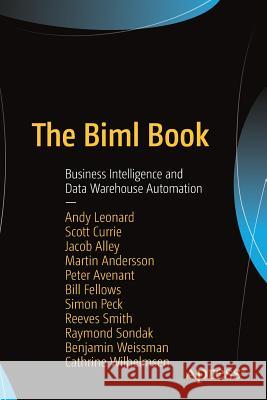The Biml Book: Business Intelligence and Data Warehouse Automation » książka
topmenu
The Biml Book: Business Intelligence and Data Warehouse Automation
ISBN-13: 9781484231340 / Angielski / Miękka / 2017 / 484 str.
Kategorie:
Kategorie BISAC:
Wydawca:
Apress
Język:
Angielski
ISBN-13:
9781484231340
Rok wydania:
2017
Ilość stron:
484
Waga:
0.72 kg
Wymiary:
23.39 x 15.6 x 2.67
Oprawa:
Miękka
Wolumenów:
01
Dodatkowe informacje:
Wydanie ilustrowane











